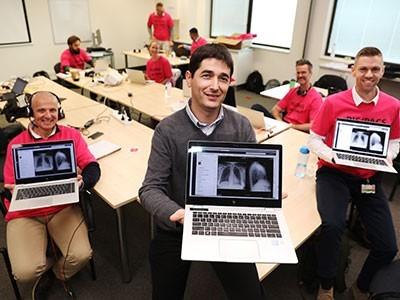Imaging plays an important role in modern medicine, from x-rays, CT scans and MRIs to nuclear medicine scans and ultrasounds.
Until recently, hospitals across NSW have been facing many image-related challenges including an ever-increasing demand for services, especially in regional and remote areas.
To address these challenges head on, eHealth NSW, in partnership with clinicians from across the state, is introducing a new radiology information system and picture archiving communications system (RIS-PACS) - and patients and clinicians from six hospitals across Sydney and Blue Mountains regions have become the first to benefit.
What's new about it?
This new RIS-PACS platform provides more modern and improved services to patients, which will include SMS reminders for outpatient appointments and secure access to their images via an online portal. It will provide enhanced diagnostic services with easy and immediate access to images and results, allowing doctors to make timely decisions regarding patient care.
eHealth NSW is migrating around one billion existing images to the new system.
The new system will have increased reliability and enable critical medical imaging information sharing among healthcare providers. This means patients get the best possible care, through improved clinical collaboration, within and across NSW public hospitals. It also delivers patient safety benefits such as tracking of radiation doses.
eHealth NSW is also building a patient-centred, state-of-the-art solution that will integrate with other core clinical systems, including the electronic medical record (eMR), patient administration system (PAS), electronic Record for Intensive Care (eRIC) and enterprise imaging repository (EIR).
What are the patient benefits?
David Cernjul, Program Director of eHealth NSW's RIS-PACS Program says, 'Involving radiologists, ICT specialists and medical imaging users in the design helped us to shape it to deliver better patient care now and into the future.'
With this system, patient images are more accessible to clinicians working in different hospitals and in remote locations. As an example, when a patient presents with symptoms that require diagnostic imaging in a NSW public hospital, any related images captured previously in another hospital can be viewed by the treating and reporting clinicians faster and in one place.
What's coming up soon?
The new system is now live at Auburn, Blacktown and Mt Druitt, Blue Mountains, Lithgow, Nepean and Westmead Hospitals. It will be rolled out in 70 hospitals across NSW by 2023 and is part of an $85 million-dollar investment by the NSW State Government.
Learn more about medical imaging - RISPACS.
